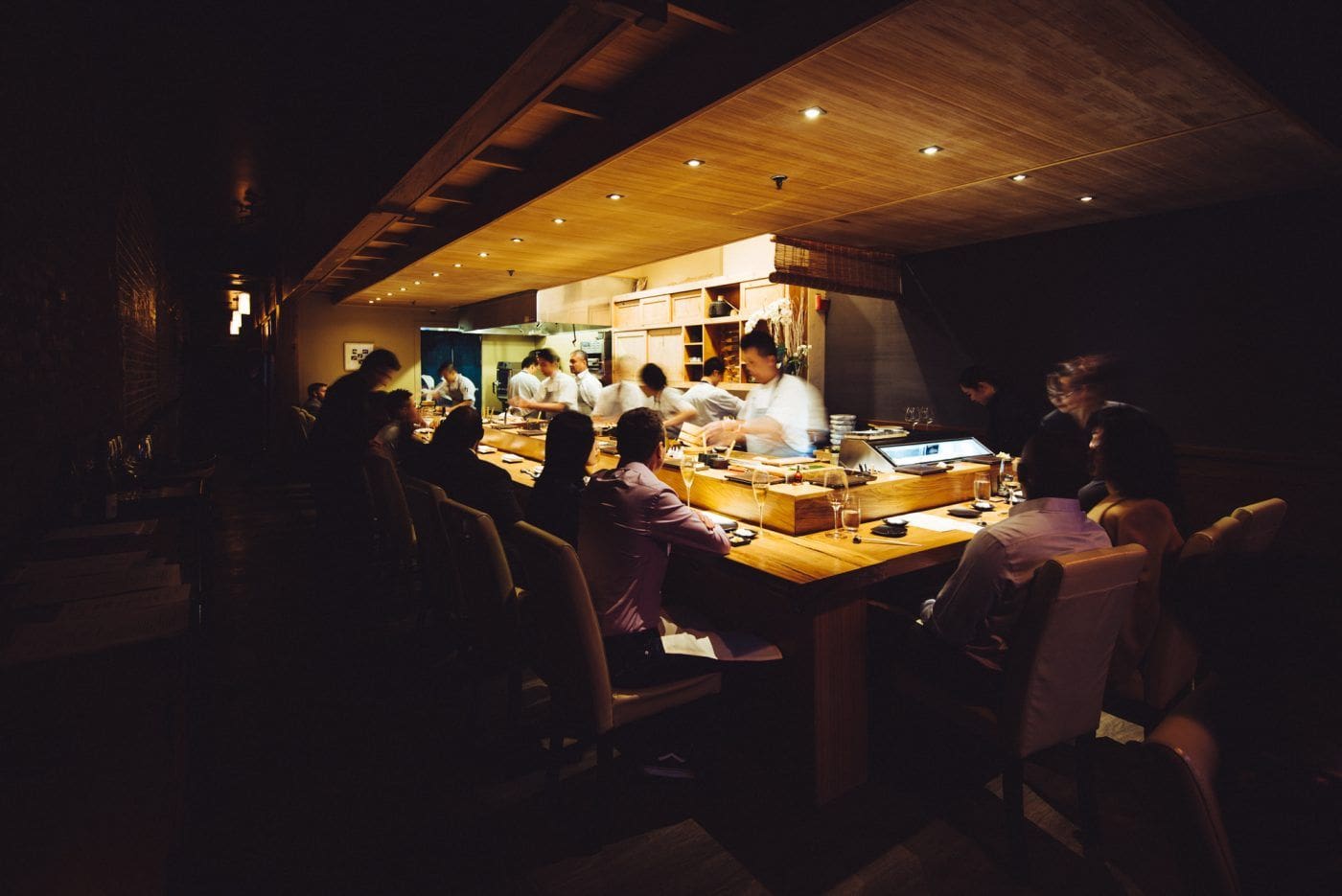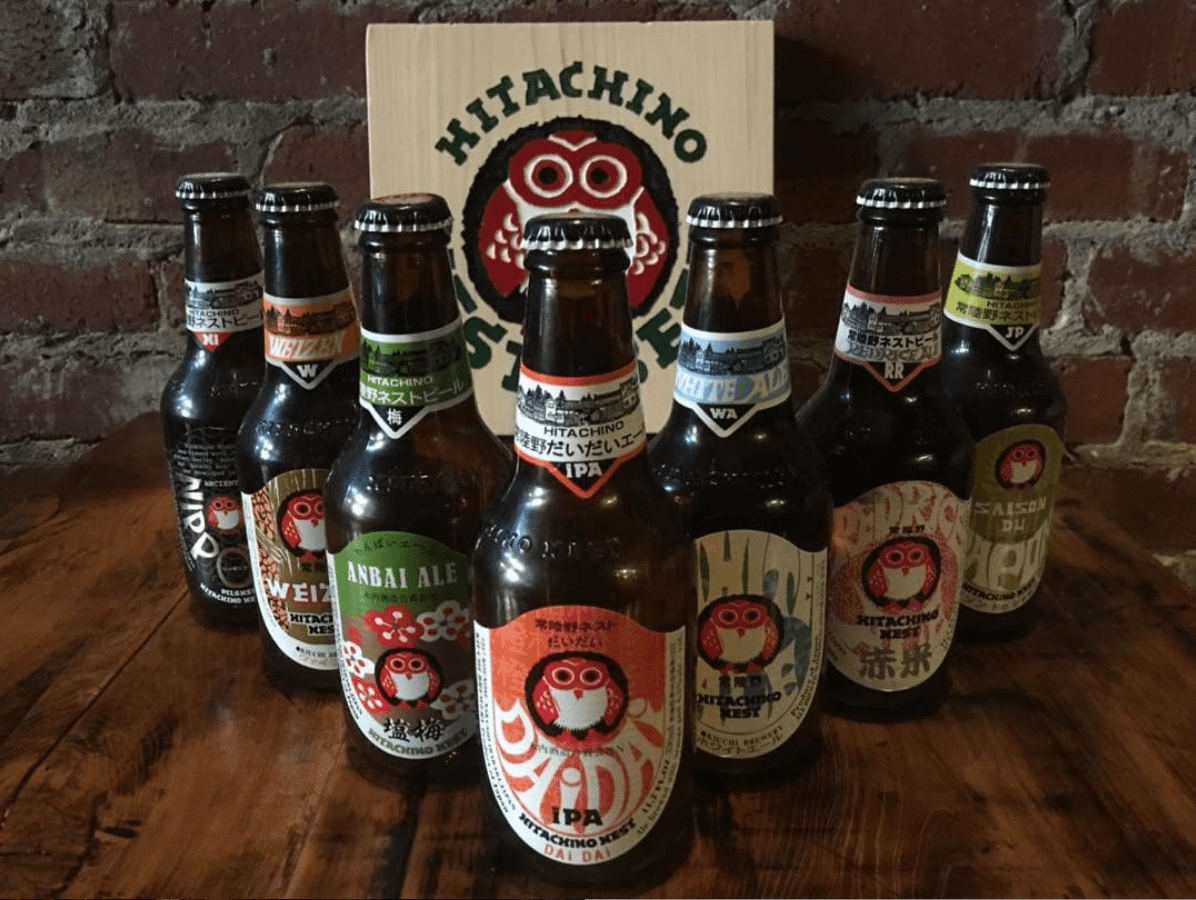
Culinary creativity and constant improvement in East London: Japanese-Italian restaurant Angelina.
When childhood friends Joshua Owens-Baigler and Amar Takhar decided to open a restaurant that would offer Italian cuisine, the first question was, “From where in Italy?” The trend in London at that time was for “authentic” restaurants that specialized in food from specific regions. So, in a search for a suitable local cuisine, they traveled around Italy, sampled countless dishes, and eventually drew up a shortlist of six potential regions. Yet doubt began to creep in.
The more they thought about what authentic Italian food was, the less confident they were, says Owens-Baigler. Even when making something as simple as pizza in London, he says, the flour, tomatoes, even the water will be different and produce something different to the Italian original.
But a chance visit to a trattoria in the Italian region of Veneto, where the chef was making Italian food with Japanese ingredients gave them an idea. On their return to London, they started researching and experimenting with Italian-Japanese fusion recipes.
Angelina restaurant opened in the East London area of Dalston on Valentines Day 2019. As its website says, its culinary mission is “to pay homage to both cuisines while challenging perceptions of what Japanese and Italian-inspired dishes look (and taste) like.”
Owens-Baigler identifies three key points where Italy and Japan’s food cultures meet. One is that “The food is simple. It’s about ingredients,” he says. Another is the huge “cultural importance” of food in both countries. And the third is “regionality.”

Angelina owners Amar Takhar (left) and Joshua Owens-Baigler (right) with chef Usman Haider
A shifting balance between Japanese and Italian influences
But when Angelina opened, the menu was weighted more toward Italian food, not only reflecting Owens-Baigler and Takhar’s own experience, but also because their chef was from Rome.
“I think we started as an Italian restaurant with soy sauce,” jokes Owens-Baigler.
But in the five years since opening, Owens-Baigler and Takhar have immersed themselves ever deeper in Japanese food culture as well as Italian, experimenting with new cooking techniques, and especially new ingredients. The restaurant’s two tasting menus change every six weeks, with the balance sometimes shifting toward the Japanese and sometimes toward the Italian. But what remains constant is that they are always looking for new ideas and ingredients.
Two favorite Japanese ingredients at Angelina are wakame (kelp) and artisanal soy sauce, both produced on Shodoshima an island in the Seto Inland Sea in the southwest of Japan. Another is Japanese madai (red sea bream) caught in Japanese waters and brought to the UK. Owens-Baigler says it is completely different to Northern European sea bream, with a more meatier textured flesh, but very delicate flavor, meaning strong seasonings aren’t needed.
Another favorite ingredient is miso, which Angelina has previously sourced close to home, hoping to support local producers and reduce food air miles. But eventually, they found that only a Japanese product would do.
We are cooking with miso all the time,” says Owens-Baigler. “But it’s one of those areas where the quality is so outrageously good that you can’t avoid buying from Japan directly.”

Left: tempura sea leek, with wasabi vinaigrette, yuzu kosho infused house-made Japanese-style mayonnaise, house tonkatsu sauce and dustings of aonori powder and shichimi. Right: chawanmushi, pickled girolles, finger lime and squid ragu.
Some ingredients used at Angelina come from a wholesaler that specializes in Italian and Japanese artisanal foods. This allows the restaurant to support traditional processes, which Owens-Baigler says is another aspect to its sustainable approach.
Italian sauces made with tofu instead of cream
Chef Usman Haider grew up in Kashmir, Pakistan and worked around the world before joining Angelina as a sous-chef in 2019, eventually taking over as head in the kitchen. His background is mainly in Japanese cooking.
He says that Angelina’s frequent menu changes are a challenge for a chef. But they are also a chance to be adventurous. After four years immersed in the two cuisines, he has developed an intuition for what may work, what may not work, and what is practical in Angelina’s kitchen.
This experience and creativity is evident in dishes such as a bread course of focaccia with wakame and furikake (rice seasoning) or a ricotta gelato that includes miso. But mindful of Japanese and Italian foods’ characteristic simplicity, Haider says he tries not to make dishes too complicated, with a focus on just two or three ingredients in each.

Chef Usman Haider is constantly creating new recipes for Angelina’s tasting menu
Angelina has two tasting menus, for which it sells tickets in advance. But while the menus are fixed, around 40% of their customers have special dietary requirements, such as vegan or gluten-free. It’s a necessity that has given birth to some ingenious culinary invention.
“We have so many customers who are vegans that we make all our sauces without dairy,” says Owens-Baigler. Instead, they use Japanese tofu.
“Tofu is my favorite ingredient,” adds Haider. “Silken tofu. You can use it in everything, basically. You can make it fluffy. You can make it creamy. You can make it sweet.”
The names of both tasting menus come from Japanese cuisine. The four-course Omakase menu is named after a Japanese style of dining in which the chef chooses dishes for diners. The ten-course Kaiseki, meanwhile, takes inspiration from the highly sophisticated multi-course cuisine of the same name. Owens-Baigler says the dishes in their kaiseki menu are ordered in a way similar to traditional Kyoto kaiseki, with a matching emphasis on seasonality, but also in a way that communicates Angelina’s own distinctive “story.”

The restaurant interior was designed by Owens-Baigler’s mother, Anna Owens
Stretching the possibilities of sake
Another medium for this story is the restaurant’s extensive and imaginative wine offering. Owens-Baigler started his own restaurant career behind the bar and is a qualified wine sommelier. But while skillfully chosen Italian wines dominated the list right from the first, it was several years before he and Takhar felt confident enough to include sake.
Although it tends to be difficult to serve sake outside of Japanese restaurants, more and more customers are asking for sake, and there are now six on Angelina’s menu. He says diners tend to look for aroma, as when drinking wine, so they have chosen sake that is “opulent, rich, and generous on the nose,” such as the junmai ginjo (premium pure rice) style. Sake currently accounts for 5% of their list, but he says their ambition is to gradually increase that to 50%.
Angelina offers other Japanese alcohols, including umeshu (plum wine,) gin, and whiskey. Right now, the restaurant is making its own vermouth using Japanese botanicals. They have also served wine made from the koshu grape in Yamanashi prefecture. Although Owens-Baigler notes that koshu wine tends to be somewhat expensive compared to similar wines from other nations, the price of Japanese Pinot Noir is coming down. He hopes to keep expanding their offering of Japanese alcohols.
“In five years, I am sure the aperitif at Angelina will be a sparkling Japanese wine,” he says.

Angelina is located in Dalston, East London. The restaurant gets many weekday customers who live locally and work at home.
The Japanese grandmother and the Italian grandmother
Among many inspirations from Japanese culture for Owens-Baigler is “kaizen,” the Japanese philosophy of assiduous, incremental improvement.
Part of that journey, he says, has been learning what is and is not possible for a Japanese-Italian fusion restaurant. They try to strike a balance between creativity and showing respect to the traditions of both cuisines. And often that means making sure there is sufficient “distance” between their creation and any authentic original dish. He says that when unsure, they imagine a Japanese grandmother and an Italian grandmother in a room together and try to guess what might upset them.
For example, they wouldn’t put double cream in a carbonara, which is common in UK carbonara recipes, but unthinkable to many Italians. On the other hand, serving sake with Western food is a “nice challenge,” he says; not to mention likely to be appreciated by Japanese sake-makers wanting to expand their market abroad.

Chef Usman Haider prepares Japanese mochi with green tea
Angelina’s quest for improvement and attention to detail extends well beyond just food. Owens-Baigler’s mother (who is a third business partner with him and Takhar) created the restaurant interior, and she also designed its Japanese-style tableware. So far these have been made in the UK, but Angelina would love to work with a stoneware kiln in Japan. Even the restaurant’s new uniforms are currently being made in the Japanese city of Osaka.
“We are still discovering, and we are still learning,” says Owens-Baigler.
Angelina has gradually developed its own tricks and techniques for uniting the profound food cultures of Japan and Italy… and the result is often quite unique.
Owens-Baigler points to the restaurant’s soffritto, a base for sauces used in many Italian dishes. Typically, it might include carrots, onions, and celery fried in olive oil.
“Our soffritto has ginger, garlic and chili in it,” he says. “It’s not Japanese and it’s not Italian. But it is like Angelina.”






